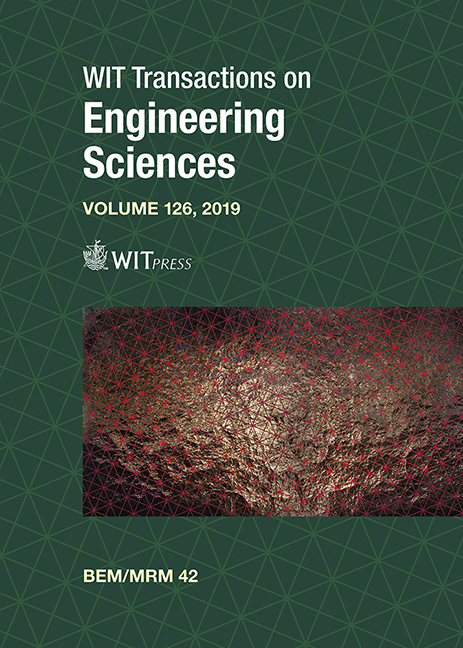FAST SINGULAR BOUNDARY METHOD: MATHEMATICAL BACKGROUND AND APPLICATION IN WAVE PROPAGATION ANALYSIS
Price
Free (open access)
Transaction
Volume
126
Pages
12
Page Range
177 - 188
Published
2019
Size
662 kb
Paper DOI
10.2495/BE420161
Copyright
WIT Press
Author(s)
ZHUO-JIA FU, JUN-PU LI, QIANG XI
Abstract
Despite active research of many decades, numerical solution of the large-scale exterior wave problems remains a great challenge. The finite element method (FEM) needs to be coupled with some effective special treatments for handling unbounded domains, which are often tricky and largely based on trial–error experiences. The boundary element method (BEM) appears attractive to exterior problems, because the fundamental solutions satisfy the governing equation and Sommerfeld radiation condition at infinity. However, the BEM encounters computationally expensive singular numerical integration of fundamental solutions. To avoid this troublesome issue, the method of fundamental solutions (MFS) distributes the source nodes on a fictitious boundary outside the physical domain and is meshless, integration-free, and highly accurate. However, the placement of fictitious boundary is still an open issue for complex-shaped boundary and multiply connected domain problems. Recently, an alternative meshless boundary collocation approach, singular boundary method (SBM), has been proposed to solve various wave propagation problems. The key issue of the SBM is to determine the accurate source intensity factors instead of the singularities of fundamental solutions at origin. Several techniques have been proposed and investigated. The SBM is mathematically simple, easy-to-program, meshless, and applies the concept of source intensity factors to eliminating the singularity of the fundamental solutions. The method avoids singular numerical integrals in the BEM and circumvents the troublesome placement of the fictitious boundary in the MFS. This paper first presents the mathematical background of the SBM, and then applies it to wave propagation analysis.
Keywords
fundamental solutions, singular boundary method, boundary element method, wave propagation





